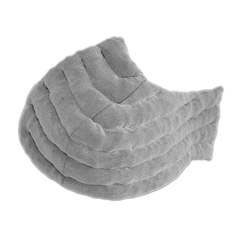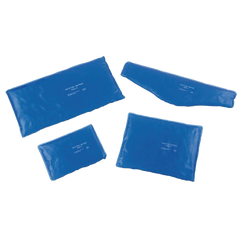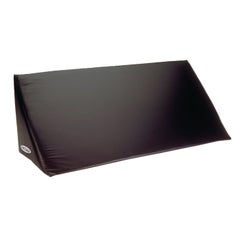The amount of time required before your patients can exercise after breast surgery depends on a variety of factors. This includes the type of breast surgery performed and how carefully post-operative care instructions are followed. Pain and stiffness can cause weakness and limit the movement of the arm and shoulder. When you feel your patients are ready to start exercising, we are here to help with post-surgery breast exercises for increasing shoulder and arm range of motion.
Share this guide for working out after breast surgery with your patients to help heal the pectoralis chest muscles and return to the activities they love!
Key Takeaways
- The recovery period after breast surgery is between four to eight weeks.
- Breast surgery is divided into three subcategories: augmentation, reduction, and reconstruction.
- Light activity after surgery can improve circulation and speed up recovery time.
Top Products in This Article
Types of Breast Surgery
What to Expect After Surgery
When Can You Exercise?
5 Post-Operative Exercises
Additional Breast Surgery Post-Op Tips
A Patient’s Guide to Breast Surgery
Types of Breast Surgery
Breast surgery is divided into three subcategories: augmentation, reduction, and reconstruction.
- Breast Augmentation - Enhances the appearance, size, and contour of a woman's breasts. Some women consider augmentation after size loss associated with pregnancy and lactation. Breast augmentation is performed with implants that can be placed over or under the pectoralis chest muscle. The incision can be placed in the axilla (armpit), areola, or lower breast.
- Breast Reconstruction - Recreates appearance, contour, and volume of the breast. Some women choose to have reconstructive surgery after a mastectomy or lumpectomy. If an implant is used, the implant is sized to match the opposite breast. A breast also can be recreated using a woman's own tissue. Tissue options for breast reconstruction include the back muscle and skin or a segment of the buttock.
- Breast Reduction - Excess weight can cause neck and back pain, skin irritation, bra strap indentations, numbness, or weakness. This procedure involves removal of excess skin, fat, and glandular tissue.
What to Expect After Surgery
After the surgery, you should expect to feel tired and sore. Your surgeon will give you an oral painkiller to ease you through the first few days. You should expect to reduce any strenuous activity for two or three weeks after breast augmentation surgery, including limiting the number of times you raise your hands above your head. This reduction in activity includes exercising and lifting heavy objects.
You may be discharged with one or more drains in place. This small tube is put in the wound to remove extra fluid from the surgery site while it heals. The doctor will decide when the drains can be safely removed depending on how much fluid is collected each day. Follow your doctor’s instructions on wound and drain care. It may take as long as 1 to 2 years for tissues to completely heal and scars to fade (the scars never go away completely).
For women with breast cancer, you may experience swelling after surgery. This swelling, also known as post-operative edema or lymphedema, can decrease in the weeks immediately after treatment. If you are concerned about your level of swelling, consult with your doctor.
Also, be sure to ask what kind of support garments you should wear. Talk with your surgeon about the type of bra to wear – sometimes it will depend on the type of surgery you had. After you heal, underwires and lace in your bra might feel uncomfortable if they press on scars or rub your skin.
When Can You Exercise?
The recovery period following breast surgery is 4-8 weeks. Patients must be mindful of the healing process and avoid certain activities that might cause injury. Your doctor might suggest you see a physical therapist or occupational therapist to create an at-home rehab program. You should always check with a doctor or physical therapist before beginning a new exercise routine.
It is important to keep moving with light activity, like short walks or stretching. Light activity after surgery will promote blood circulation and reduce the risk of blood clots. Proper blood flow can also speed up the healing process.

After about 2-3 weeks, exercise after breast augmentation, reconstruction, or reduction is limited to riding a stationary bike at the gym, walking on an inclined treadmill, or walking longer distances outside. Light cardio can be slowly introduced to get the heart rate up, however, it’s advised that patients still avoid strenuous upper-body activities, like swimming, strength training, or push-ups. High impact workouts and weightlifting after breast surgery should also be avoided for at least 6-8 weeks, or until cleared by a surgeon.
5 Post-Operative Exercises
It’s important to get the arm and shoulder moving again after breast surgery. Exercise after breast surgery helps decrease the side effects of the healing process and get you back to your usual activities. Prior to performing these post-operative exercises, make sure to consult with your surgeon or physical therapist for appropriate workouts at your stage of recovery. If exercises that were previously within your capability suddenly prove too difficult, rest for a few more days before trying again.
Shoulder Rolls
- With your shoulders relaxed, slowly roll your shoulders forward and then backward
- As you roll them backwards, squeeze the shoulder blades together at the back
- Take a deep breath as you do each shoulder roll. Start with 5 rolls every hour and gradually build up to 10 in the first 3 weeks
Shoulder Wings
- Place your hands on your chest and raise your elbows out to the side
- Limiting your range of motion, slowly lower your elbows down
- Finish the exercise by raising your elbows only high enough to feel a gentle stretch and no discomfort. Do this 10 times every hour in the first 3 weeks
Arm Circles
- Stand with your arms relaxed and lift one arm out from your side
- Holding your arm straight, slowly make small, counter-clockwise circles in the air. Use your shoulder muscles to make the movement, rather than your elbow or wrist
- Gradually increase the size of the circles until the circles are as large as you can make them without causing discomfort. Repeat 10 times
- Do this with the same arm, but this time clockwise. Repeat 10 times. Then switch to the opposite arm
Forward Wall Crawls
- Face a wall, standing with your feet six inches from the wall. Place both hands on the wall, keeping your elbows slightly bent
- With your head and back held straight, inch your fingers up the wall until you feel a little tension.
- Hold this position while you breathe slowly through your nose and out your mouth.
- Slowly climb your fingers back down the wall to your starting position. Repeat 10 times every 2-3 hours during 4-6 weeks of recovery.
Side Bends
- Lift your arms slowly over your head, straightening your arms and clasp your right hand on your left wrist
- Once your arms are over your head, slowly bend your trunk to the right keeping your arms overhead
- Return to the starting position. Slowly bend to the left with your left hand over your right wrist. Repeat 5 to 7 times every 2-3 hours during 4-6 weeks of recovery
As you progress through post-op breast surgery exercises and your recovery, your upper body strength will begin to improve. For a moderate level exercise, watch this video here!
Additional Breast Surgery Post-Op Tips
- Cold Therapy. Apply ice or a cold pack over your breast for 10 to 20 minutes. Do this every 1 to 2 hours for the next 3 days or until the swelling goes down. A cold pack can also be helpful when working out after breast augmentation, reconstruction, or reduction.
- Get Plenty of Sleep. To reduce swelling and pain, sleep upright, such as in a recliner, for the first 48 hours after the operation. After 48 hours, sleep on your back while lying in bed to enhance circulation. A body bolster can be used to add comfort while supporting the trunk and enhancing pressure reduction during the night.
- Mild Compression. Drainage tubes may be attached to your breast after surgery. To help secure the drainage tubes, you’ll have gauze bandages wrapped around your breasts. In addition, SwellSpots can be used to apply mild pressure and reduce swelling in and around the breast tissue.
- Scar Massage. Using a mini massager, massage the scar to help break up scar tissue and improve circulation. The scar will become less visible, and your range of motion may improve. Massaging the scar can also reduce pain and sensitivity to touch.
Get your recovery tools now!
Recap
It’s important to have an idea of what to expect after breast surgery. The time it takes you to recover from surgery will depend on the type of reconstruction you have. The basic exercises described above will help you get your arms moving, improving strength and flexibility. Most women begin to feel better in just a few weeks and can return to normal activities in a couple of months.
References
- Anonymous. (2020). Breast Surgery Post-Operative Guidelines and Exercises. Bringham and Women’s Cancer Center. Retrieved from https://bit.ly/3USoD28
- Stephan, Pam. (2020). Arm Exercises After Breast Surgery. VeryWell Health. Retrieved from https://bit.ly/2We9hYP
- Williams, John. (2020). Your Fit Guide After Breast Augmentation. Plastic Surgery Center of Baton Rouge. Retrieved from https://bit.ly/3rjhwTa
Medical Disclaimer: The information provided on this site, including text, graphics, images, and other material are for informational purposes only and are not intended to substitute for professional medical advice, diagnosis, or treatment. Always seek the advice of your physician or other healthcare professional with any questions or concerns you may have regarding your condition.








 France
France Australia
Australia







